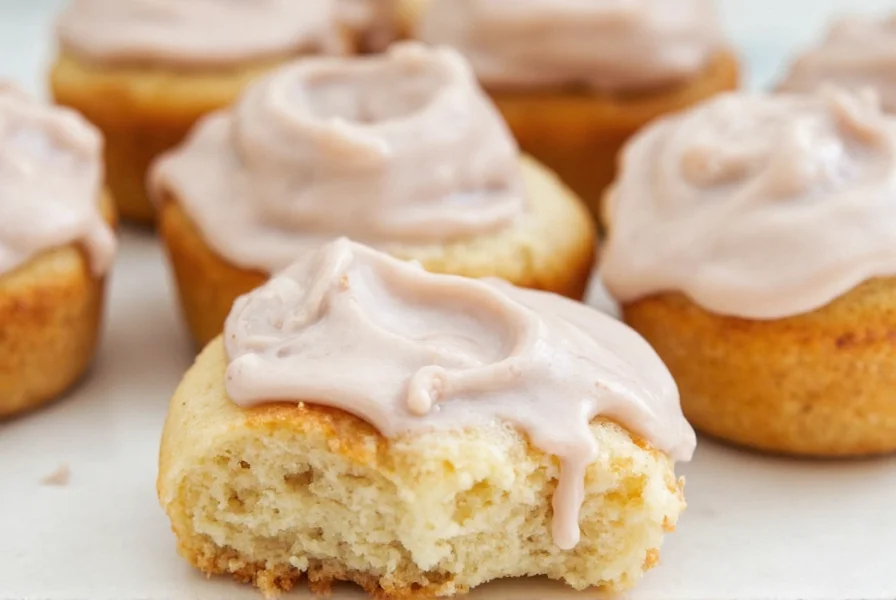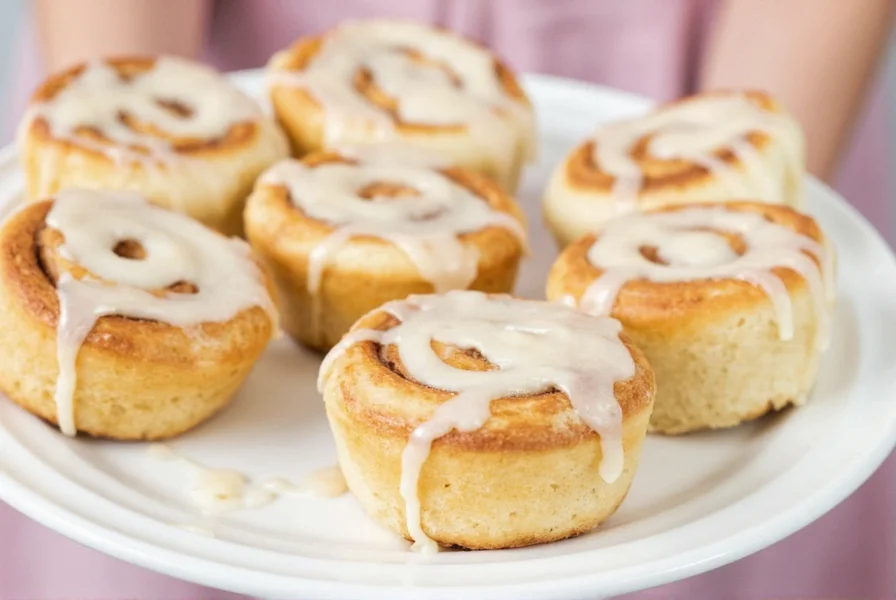Perfect cinnamon roll icing transforms good pastries into extraordinary treats. While the cinnamon roll itself provides warmth and spice, the icing delivers that essential finishing touch that balances flavors and textures. Understanding the science behind great icing helps bakers consistently achieve professional results at home.
Understanding Cinnamon Roll Icing Fundamentals
Cinnamon roll icing serves multiple purposes: it adds sweetness to counter the spice, provides moisture to prevent dryness, and creates visual appeal. The ideal icing has a consistency that flows smoothly over the rolls without soaking in completely or sliding off. Temperature plays a crucial role—icing applied to rolls that are too hot will melt and become watery, while icing applied to cooled rolls won't absorb properly.
Top Cinnamon Roll Icing Variations
While preferences vary, these three icing types dominate professional and home baking:
| Icing Type | Key Ingredients | Texture Profile | Best Application Temperature |
|---|---|---|---|
| Cream Cheese | Cream cheese, butter, powdered sugar, vanilla | Rich, spreadable, slightly firm | 70-80°F (rolls) |
| Powdered Sugar Glaze | Powdered sugar, milk, vanilla | Pourable, sets slightly | 100-110°F (rolls) |
| Boiled Caramel Icing | Sugar, butter, cream, corn syrup | Glossy, sticky, firm set | 110-120°F (rolls) |
Perfect Cream Cheese Icing Recipe
For the best cinnamon roll icing recipe with cream cheese:
- 8 oz full-fat cream cheese, softened to room temperature
- ¼ cup unsalted butter, softened
- 1 cup powdered sugar, sifted
- 1 tsp pure vanilla extract
- 2-3 tbsp heavy cream or milk
- ¼ tsp salt
Beat cream cheese and butter until completely smooth. Gradually add powdered sugar, then vanilla and salt. Add cream one tablespoon at a time until reaching desired consistency. This cream cheese icing for cinnamon rolls provides the perfect balance of tanginess and sweetness that complements the warm spices.
Troubleshooting Common Icing Problems
Even experienced bakers encounter issues with their cinnamon roll icing. Here's how to fix the most common problems:
Icing Too Runny
If your cinnamon roll icing too runny fix is needed, gradually incorporate additional sifted powdered sugar, one tablespoon at a time. For cream cheese icing, chilling the mixture for 10-15 minutes often helps it thicken naturally. Avoid adding liquid to already thin icing—this only compounds the problem.
Icing Too Thick
When icing becomes difficult to spread or drizzle, add liquid in very small increments. For powdered sugar glaze, use milk or cream; for cream cheese icing, heavy cream works best. Add only ½ teaspoon at a time, mixing thoroughly between additions. Remember that icing naturally thins as it sits at room temperature.

Professional Tips for Perfect Icing
Master bakers follow these techniques for perfect cinnamon roll icing consistency every time:
- Temperature control: Keep cream cheese and butter at precise room temperature (68-72°F) for smooth incorporation without separation
- Sifting is essential: Always sift powdered sugar to eliminate lumps that create uneven texture
- Timing matters: Apply icing when rolls reach 100-110°F—warm enough to absorb flavor but cool enough to maintain structure
- Flavor balancing: Add a pinch of salt to counter excessive sweetness and enhance overall flavor complexity
- Storage wisdom: Store leftover icing in an airtight container with plastic wrap pressed directly on the surface to prevent skin formation
Ingredient Substitutions and Variations
When creating homemade cinnamon roll frosting, flexibility with ingredients ensures success even with pantry limitations:
Cream Cheese Alternatives
For those seeking cinnamon roll icing without cream cheese, consider these substitutes:
- Mascarpone cheese (provides similar richness with milder tang)
- Full-fat Greek yogurt (adds protein and tanginess)
- Coconut cream (for dairy-free option with subtle flavor)
Sweetener Options
While powdered sugar creates the ideal texture, these alternatives work in a pinch:
- Confectioners' sugar substitute (1 cup granulated sugar processed with 1 tbsp cornstarch)
- Maple syrup glaze (reduced maple syrup with powdered sugar)
- Honey glaze (warmed honey thinned with cream)
Application Techniques for Professional Results
How you apply icing affects both appearance and flavor distribution. For cinnamon roll icing that looks and tastes professional:
- Cool rolls to optimal temperature (use an instant-read thermometer for precision)
- Prepare icing to proper consistency (should ribbon when drizzled from spoon)
- Use a piping bag or zip-top bag with corner snipped for controlled application
- Drizzle in a zig-zag pattern across multiple rolls for even coverage
- Allow 5-7 minutes for icing to set slightly before serving
Frequently Asked Questions
What's the ideal consistency for cinnamon roll icing?
The ideal cinnamon roll icing consistency should ribbon when drizzled from a spoon—thick enough to cling to the rolls without immediately soaking in, but thin enough to flow smoothly over the surface. For powdered sugar glaze, this typically means a ratio of 4 cups powdered sugar to ½ cup liquid. Cream cheese icing should be spreadable but hold its shape when piped.
Why does my cinnamon roll icing become watery?
Cinnamon roll icing becomes watery primarily when applied to rolls that are too hot. The ideal roll temperature for icing application is between 100-110°F. Excess liquid in the icing recipe or insufficient powdered sugar can also cause runny icing. To fix watery icing, gradually incorporate additional sifted powdered sugar, one tablespoon at a time, until proper consistency is achieved.
Can I make cinnamon roll icing ahead of time?
Yes, you can make cinnamon roll icing up to 24 hours ahead. Store cream cheese icing in an airtight container with plastic wrap pressed directly on the surface to prevent skin formation. Powdered sugar glaze can be stored at room temperature for up to 12 hours. Before using, bring to proper consistency by adding small amounts of liquid or powdered sugar as needed. Re-whip cream cheese icing for 30 seconds to restore smooth texture.
What's the difference between icing and glaze for cinnamon rolls?
Icing typically contains fat (like butter or cream cheese) and sets to a thicker consistency, while glaze is primarily powdered sugar and liquid that remains pourable. Cream cheese icing provides richer flavor and spreads easily, while powdered sugar glaze offers classic sweetness and shiny appearance. Professional bakers often use 'icing' for thicker, spreadable toppings and 'glaze' for thinner, pourable coatings, though the terms are frequently used interchangeably.











 浙公网安备
33010002000092号
浙公网安备
33010002000092号 浙B2-20120091-4
浙B2-20120091-4